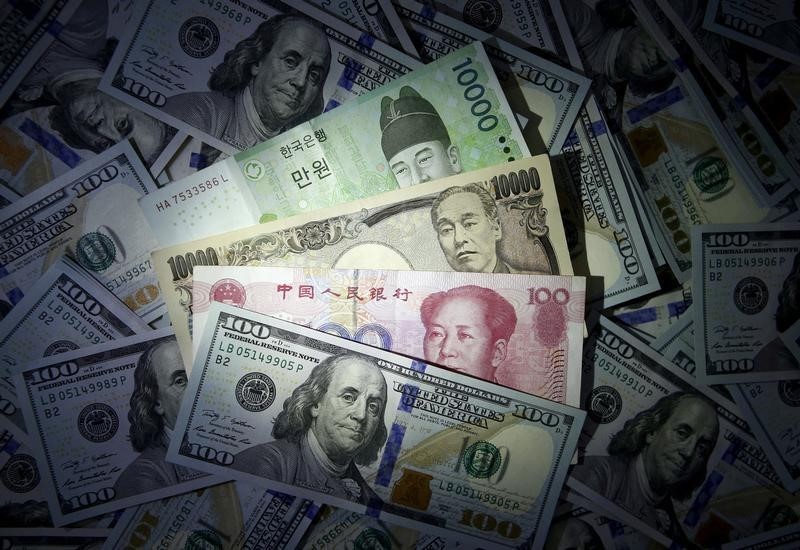By Karen Brettell
NEW YORK (Reuters) - The U.S. dollar fell from three-week highs against a basket of currencies on Wednesday after weak manufacturing data dented some optimism about U.S. economic growth ahead of a highly anticipated jobs report on Friday.
Hawkish comments by Federal Reserve Chair Janet Yellen and Vice Chair Stanley Fischer last week increased expectations the U.S. central bank is moving closer to an interest rate hike.
Fischer has said that jobs data for August due on Friday will be a consideration for when the Fed raises rates. Employers are expected to have added 180,000 jobs in August, according to the median estimate of 89 economists polled by Reuters. [ECONUS]
The greenback rose to session highs after the ADP National Employment Report on Wednesday showed U.S. private employers adding 177,000 jobs in August, slightly above the 175,000 forecast by a Reuters survey of economists.
Private payroll gains in July were revised up to 194,000 from 179,000.
“The upward revision was encouraging, for ... August it was pretty close to expectations,” said Richard Franulovich, a senior currency strategist at Westpac Banking Corporation in New York.
The dollar fell from the day's highs, however, after the Institute for Supply Management-Chicago said its business barometer fell 4.3 points to 51.5 in August, below expectations.
The manufacturing sector is lagging gains in the economy as factories continue to process the lingering effects of the dollar's past rally and oil price collapse.
An update on Chinese factory activity will also be in focus later on Wednesday.
The dollar index, which measures the currency against a basket of six majors, rose as high as to 96.255 (DXY), its highest since Aug. 9, before falling back to 96.005, marginally down on the day.
The greenback gained against the yen to 103.39 yen <JPY=>, after hitting 103.53, its highest since July 29.
The dollar also hit three-week highs against the euro after data on Wednesday showed euro zone inflation was stable in August, contrary to expectations of a slight rise and piling more pressure on the European Central Bank to act.
The euro <EUR=> weakened to $1.1121, the lowest since Aug. 10, before recovering to $1.1152.

Most investors do not expect further policy measures when the ECB’s rate-setting Governing Council meets next week, though Westpac’s Franulovich noted that the recent string of weak data has increased speculation that further easing could be possible.